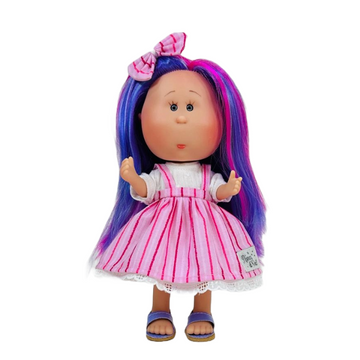Not known Facts About Dolls And Accessories
Table of ContentsHow Dolls And Accessories can Save You Time, Stress, and Money.All about Dolls And Accessories3 Simple Techniques For Dolls And AccessoriesDolls And Accessories Fundamentals ExplainedDolls And Accessories Can Be Fun For AnyoneExcitement About Dolls And AccessoriesMore About Dolls And Accessories
When dolls are consisted of in team play, children practice waiting, sharing, and paying attention to others' concepts. Whether they're making believe to be a moms and dad, sibling, or friend, youngsters learn just how connections workhow to sustain others, fix disagreements, and take care of another person. These early role-play experiences end up being the foundation for healthy and balanced friendships and connections later in life.Duplicating soothing routines with a doll (feeding, rocking, closing) can aid kids feel calm and secure. These soothing rituals educate them exactly how to self-regulate. Dealing with a doll can make a kid feel qualified and positive - baby dolls. It offers them a sense of obligation and control in a world that frequently feels uncertain.
Our Dolls And Accessories PDFs
When kids see dolls that mirror their race, heritage, and culture, it strengthens a positive sense of identification. Dolls likewise introduce kids to cultures outside their very own, developing considerate inquisitiveness and empathy for others.
As Dr. Karyn Purvis, a leader in child development and trauma-informed care, as soon as said: This powerful quote highlights how play isn't just funit's how kids discover best. The brain cords itself through repeating. Yet when a youngster is involved, joyful, and mentally linked to an activitylike doll playthe mind strengthens those links faster and more meaningfully.
Some Known Details About Dolls And Accessories

Children require empathy, compassion, and creative imagination tooand doll play supplies that. Yesdolls supply something unique. They urge open-ended storytelling and psychological connection in a manner few other playthings do. Dolls are often a youngster's first "good friend," helping them practice partnerships, develop communication skills, and really feel comforted. Kids establish their feeling of self from a young age.
The 3-Minute Rule for Dolls And Accessories
Through dolls that matter. Samantha Ong Samantha Ong is the owner of Joeydolls, a Canadian-based toy brand on a mission to commemorate Eastern societies with joyful, comprehensive play. Motivated by her very own experiences expanding up without cultural representation, Samantha develops dolls that aid youngsters feel pleased of that they are while sparking interest and empathy in others.
Playing with dolls urges children to speak more about others' ideas and feelings, a research study has located. The research study suggests that playing imaginary games with dolls can assist kids develop social skills, concept of mind and empathy.
The Main Principles Of Dolls And Accessories
They were also most likely to attend to the dolls in the second individual, speaking to them directly, whereas the characters on the computer system display they often tended to describe in the 3rd person. No difference was observed between young boys and ladies."Inner state language can indicate that a youngster is considering various other people's thoughts and emotions while having fun with dolls," said Gerson.
And that they see language use in this respect is excellent verification of the hypothesis."Mardell added that the findings ought to use to any type of kind of role-play toy, rather than being certain to Barbies."Children typically start to show indicators of internal state language around the age of four.
An Unbiased View of Dolls And Accessories
"It becomes vital for making and sustaining friendships, and exactly how they gain from their educators, and parents."The research study also found that the children had boosted mind activity in the posterior exceptional temporal sulcus (pSTS) region when they talked as though their dolls had thoughts and feelings. The pSTS area is thought to be associated with the growth of social and emotional processing skills.
Childhood is not a fixed life stage; certainly, the interpretation, definition and understanding of childhood years are all subject to modification. By the nineteenth century among one of the most extensive modifications was the importance positioned on permitting youngsters to experience "the carefree delights" of childhood via play activities. Play was now considered to be an important element of a great childhood years.
In order to completely understand the significance of play, one have to additionally understand the importance of the doll. Nonetheless, dolls are a lot more than playthings designed to captivate girls. Throughout the nineteenth century correct play tasks were chosen to advertise intellectual, physical or emotional advancement. Dolls were especially popular due to the fact that they were believed to foster and support feminine top qualities such as compassion, caring and concern.
Not known Details About Dolls And Accessories

It is site here just via historical examinations that scientists can intend to discover and record the complete series of playtime experiences. Chronicling these experiences, and specifically the duty of dolls, is vital for providing a more complete image of childhood years during the nineteenth century. Alarcn, Sara E - doll accessories., "Child's Play: The Role of Dolls in 19th Century Childhood Years" (2007 )